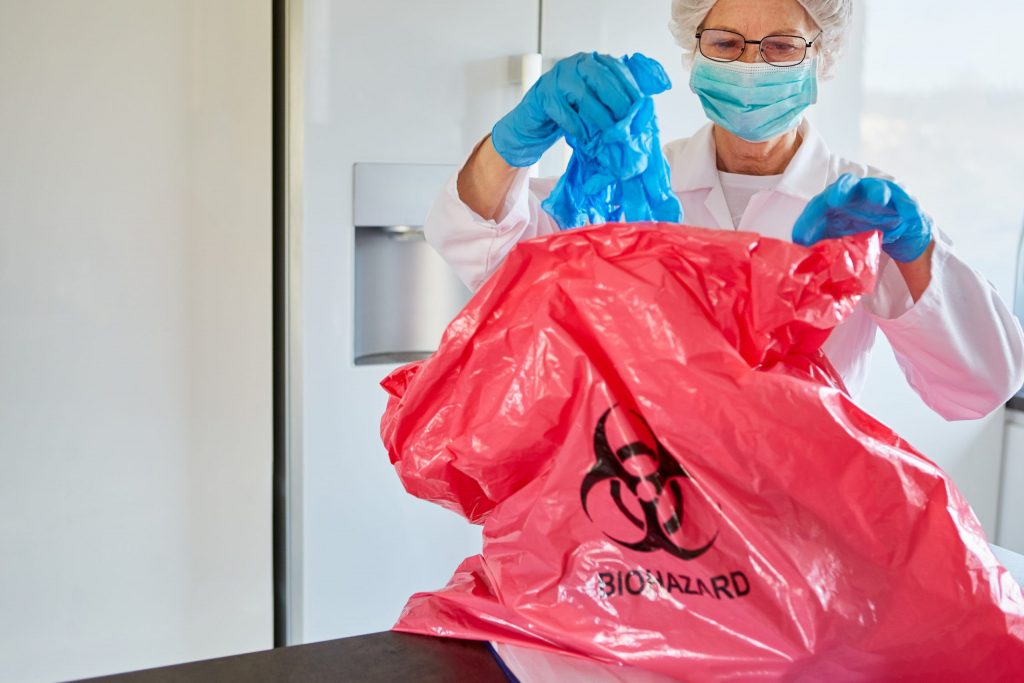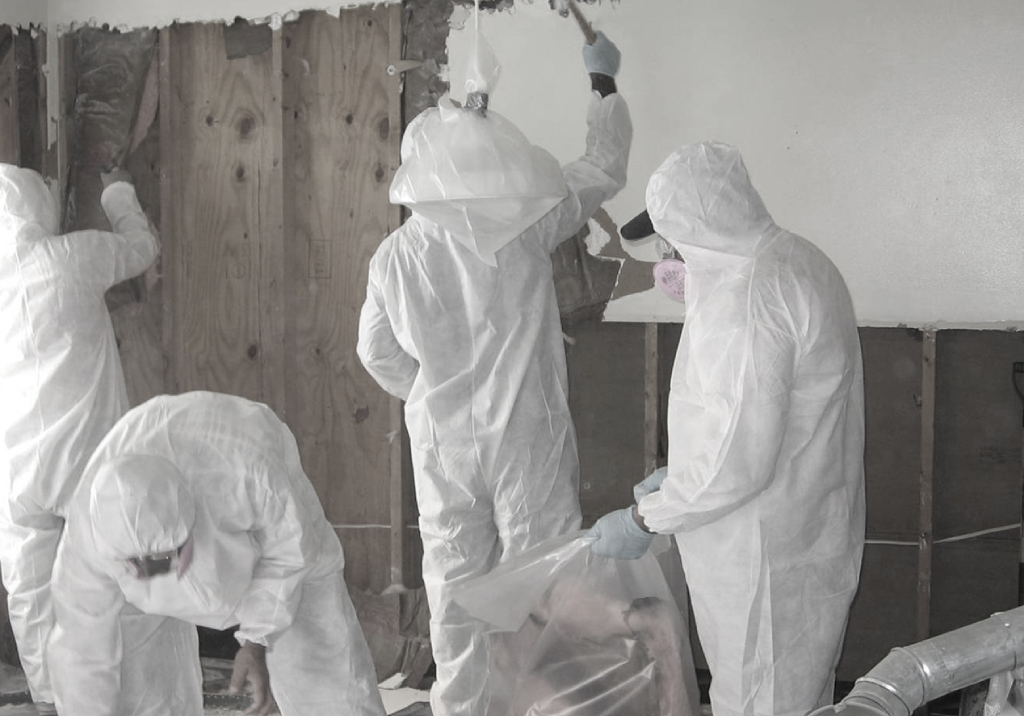Biohazard Removal: Safe Handling and Disposal of Hazardous Products
Biohazard Removal: Safe Handling and Disposal of Hazardous Products
Blog Article
Expert Biohazard Cleaning and Decontamination for Blood, Bodily Fluids, and Hazardous Materials
The potential wellness threats linked with direct exposure to biohazards highlight the important demand for meticulous handling and thorough cleaning. As we navigate the detailed landscape of biohazard clean-up, understanding the subtleties of policies, conformity, and the customized equipment at play becomes critical in making sure a detailed and risk-free decontamination procedure.
Health Dangers of Biohazard Direct Exposure
Exposure to biohazards presents considerable health dangers that can cause extreme repercussions for people and communities alike. Biohazards include a wide variety of organic materials, including blood, bodily fluids, mold and mildew, microorganisms, viruses, and various other possibly infectious products. When individuals come right into contact with these biohazards, whether through mishaps, improper handling, or environmental exposure, they encounter the threat of having serious illnesses or diseases.
One of the key wellness dangers associated with biohazard exposure is the transmission of infectious illness. Bloodborne virus such as HIV, liver disease B and C, and different germs can be existing in biohazardous materials, posturing a direct hazard to human health and wellness. Inhaling airborne biohazards like mold and mildew spores or entering call with polluted surface areas can likewise result in breathing concerns, allergies, and various other unfavorable wellness effects.
Moreover, biohazard exposure can have long-term wellness effects, with some conditions materializing years after the initial call (Blood Cleanup). As a result, it is essential to prioritize appropriate biohazard cleaning and decontamination to minimize these health and wellness risks and make sure the safety of communities and individuals

Specialized Educating for Biohazard Clean-up
When it concerns managing biohazard cleanup successfully and safely, specialized training plays a basic function in making sure proper purification procedures are adhered to. Biohazard clean-up calls for particular knowledge and abilities to efficiently reduce risks related to bloodborne virus, physical fluids, and hazardous materials. Specialists trained in biohazard cleaning go through strenuous direction on exactly how to safely take care of, get rid of, and deal with biohazardous products to stop contamination and exposure.
Specialized training for biohazard clean-up covers a variety of necessary subjects, consisting of appropriate personal safety equipment (PPE) use, bloodborne microorganism awareness, purification techniques, and unsafe waste disposal procedures. People educated in biohazard cleaning are equipped with the essential know-how to analyze contamination levels, determine prospective hazards, and execute appropriate cleaning treatments in compliance with regulative standards.
Continual training and education and learning are extremely important in the area of biohazard cleaning to stay updated on the most up to date purification innovations, safety and security protocols, and laws. By purchasing specialized training, biohazard cleaning professionals can efficiently react to emergency situation cleaning situations and safeguard both public health and the atmosphere.
Significance of Appropriate Decontamination Methods
Using proper decontamination techniques is essential in biohazard clean-up to successfully get rid of unsafe products and reduce wellness dangers. Efficient purification not just ensures the removal of visible traces of blood, bodily liquids, and various other biohazards however likewise targets invisible microorganisms that may present severe health click for more info hazards otherwise appropriately eliminated. By complying with rigorous decontamination methods, trained experts can significantly decrease the danger of exposure to dangerous microbes, viruses, and microorganisms that might bring about conditions or infections.
Appropriate decontamination techniques involve using specific devices and anti-bacterials that are specifically developed to counteract biohazards efficiently. Complete cleansing and disinfection of polluted areas are vital to protect against the spread of microorganisms and make sure a risk-free setting for owners. In addition, the appropriate disposal of biohazardous waste adhering to decontamination procedures is important in avoiding contamination of other surface areas or people.

Tools and Tools for Safe Cleaning
The proper tools and tools play a crucial role in ensuring the efficient and risk-free cleaning of biohazardous products. When managing blood, physical liquids, or unsafe products, biohazard cleansing specialists rely upon specialized equipment to reduce exposure dangers and extensively sanitize the affected area. Individual protective equipment (PPE) such as gloves, coveralls, masks, and safety glasses are important to shield against direct contact with possibly transmittable products. In addition, biohazard cleaning kits consisting of anti-bacterials, absorbent products, and biohazard bags are used to safely consist of and get rid of of contaminated products. Blood Cleanup.
Advanced cleaning tools like hospital-grade anti-bacterials, HEPA-filtered vacuum cleaners, and fogging devices are employed to sterilize surface areas and eliminate biohazards successfully. Specialized devices such as sharps containers and biohazard waste disposal containers are used to safely manage sharp items and biohazardous waste materials. By making use of the appropriate devices and tools, biohazard cleansing professionals can make sure a thorough clean-up procedure that prioritizes security and minimizes health and wellness threats for both workers and occupants of the affected area.
Rules and Compliance in Biohazard Cleansing
Proper adherence to guidelines and conformity standards is extremely important in biohazard cleansing to guarantee the safety and security of both employees and the setting. Government firms such as OSHA (Occupational Security and Health And Wellness Administration) and the EPA (Environmental Defense Company) have actually established particular guidelines for biohazard cleaning treatments to reduce health threats and address environmental contamination. These policies cover a variety of elements consisting of the handling, transport, and disposal of biohazardous materials, as well as the essential training and safety equipment needed for employees associated with the cleaning procedure.
Biohazard cleansing companies should stay up-to-date with these laws to guarantee that their operations fulfill the needed safety criteria. Failing to abide by these guidelines can lead to extreme effects, consisting of penalties, lawsuit, and threatening the health and wellness of people and the environment. By complying with stringent laws and conformity actions, biohazard cleaning firms can effectively mitigate threats and guarantee a complete and risk-free clean-up procedure for all parties entailed.
Verdict
In conclusion, biohazard cleaning and decontamination call for specific training, correct strategies, and adherence to policies. Exposure to blood, bodily fluids, and harmful materials postures considerable health threats, making it vital to make use of the best equipment and tools for secure clean-up. By adhering to stringent methods and guidelines, specialists can successfully mitigate the threats related to biohazard exposure and ensure the safety of both themselves and others.
As we navigate the complex landscape of biohazard clean-up, understanding the nuances of policies, conformity, and the specialized tools at play becomes crucial in guaranteeing a complete and secure decontamination procedure. (Blood Cleanup)
When it comes to taking care click for more info of biohazard cleanup efficiently and securely, specialized training plays a basic role in making sure appropriate purification treatments are adhered to.Using correct decontamination methods is crucial in biohazard cleaning to properly eliminate dangerous products and decrease wellness threats. Furthermore, biohazard cleaning kits containing anti-bacterials, absorptive materials, and biohazard bags are utilized to securely dispose and have of polluted things.
Federal government agencies such as OSHA (Occupational Safety And Security and Wellness Management) and the EPA (Environmental Defense Company) have actually established specific standards for biohazard cleanup treatments to reduce health risks and ecological contamination.
Report this page